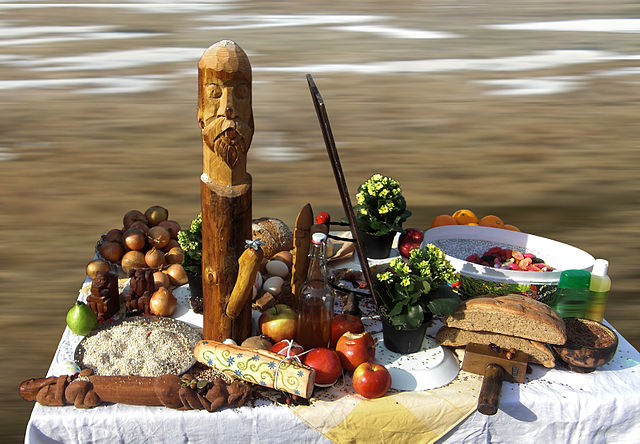Neopagan witchcraft, sometimes referred to as The Craft, is an umbrella term for some neo-pagan traditions that include the practice of magic. These traditions began in the mid-20th century, and many were influenced by the witch-cult hypothesis; a now-rejected theory that persecuted witches in Europe had actually been followers of a surviving pagan religion. The largest and most influential of these movements was Wicca. Some other groups and movements describe themselves as "Traditional Witchcraft" to distinguish themselves from Wicca.
Wiccans gather for a handfasting ceremony at Avebury in England
Modern paganism, also known as contemporary paganism and neopaganism, is a type of religion or family of religions influenced by the various historical pre-Christian beliefs of pre-modern peoples in Europe and adjacent areas of North Africa and the Near East. Although they share similarities, contemporary pagan movements are diverse and as a result, they do not share a single set of beliefs, practices, or texts. Scholars of religion often characterise these traditions as new religious movements. Some academics who study the phenomenon treat it as a movement that is divided into different religions while others characterize it as a single religion of which different pagan faiths are denominations.
Heathen altar for Haustblot in Björkö, Sweden. The larger wooden idol represents the god Frey.
A Heathen shrine to the god Freyr, Sweden, 2010
The Parthenon, an ancient pre-Christian temple in Athens dedicated to the goddess Athena. Strmiska believed that modern pagans in part reappropriate the term "pagan" to honor the cultural achievements of Europe's pre-Christian societies.
Samogitian Sanctuary, a reconstruction of a medieval pagan observatory in Šventoji, Lithuania used by the modern Romuvans





